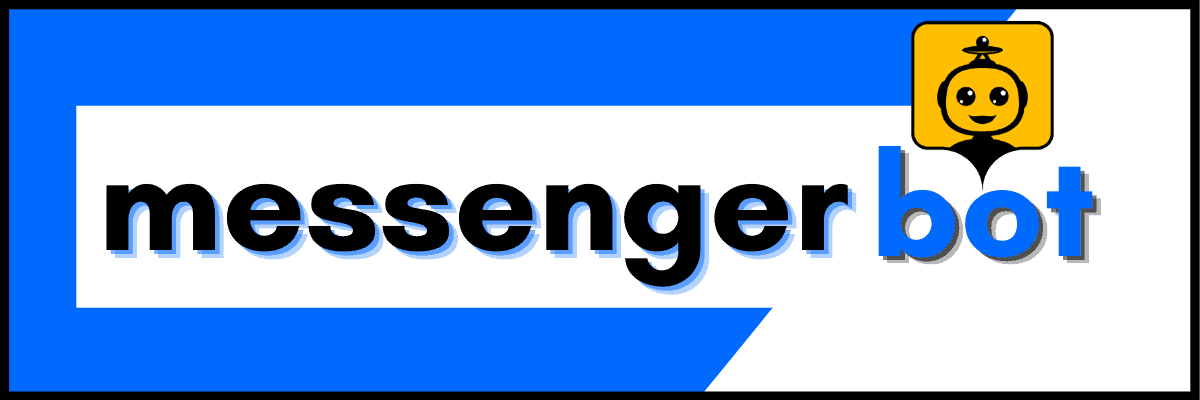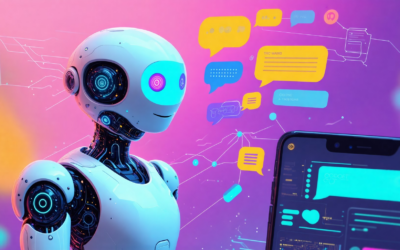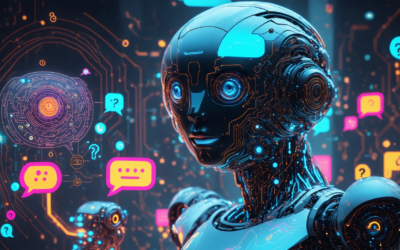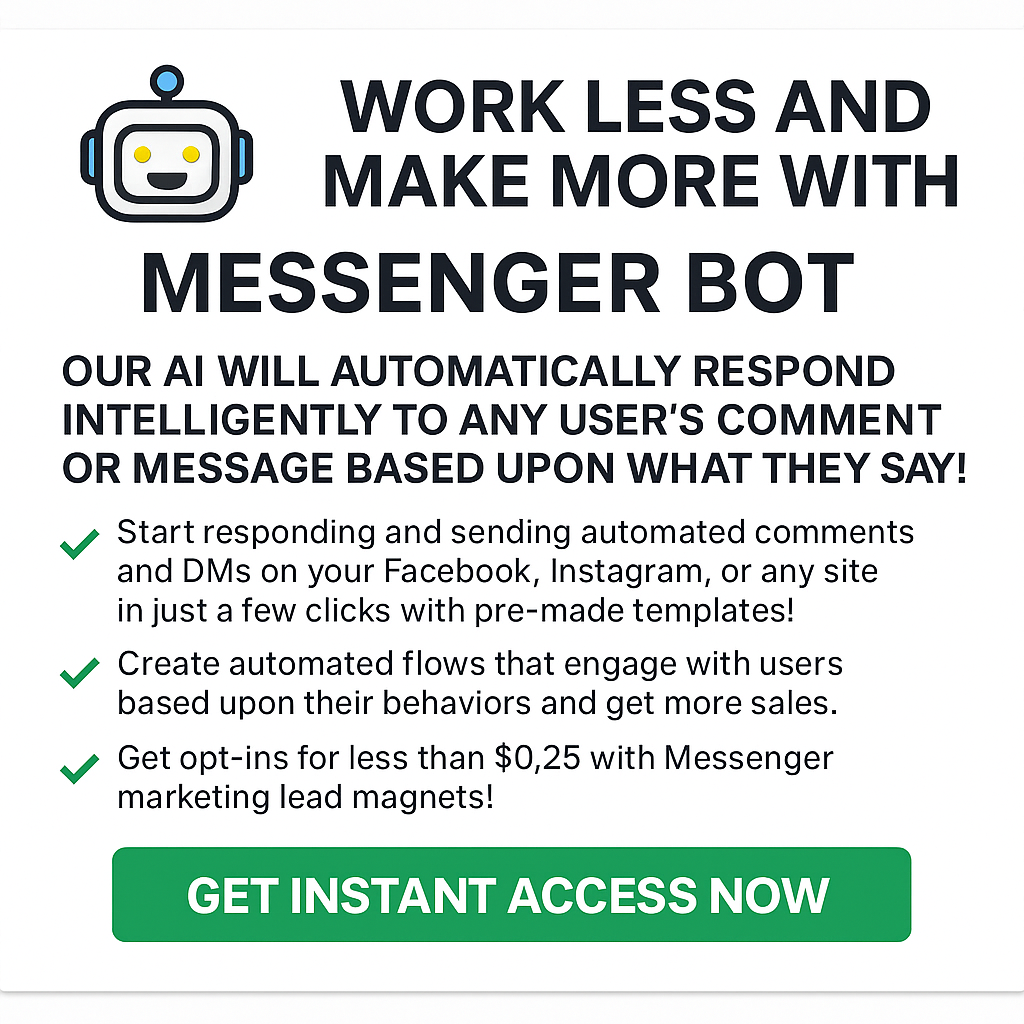In the ever-evolving landscape of web technology, website bots have emerged as powerful tools that can enhance user experience, streamline operations, and even pose potential risks. From chatbots that engage visitors to sophisticated AI-driven systems, the world of website bots is vast and complex. This comprehensive guide delves into the intricacies of bot implementation, exploring everything from free options and GitHub resources to custom development strategies. We’ll examine the costs associated with bot integration, showcase real-world examples, and discuss the critical aspects of bot detection and protection. Whether you’re a developer looking to create a bot, a business owner considering ChatGPT integration, or a webmaster concerned about bot-related security threats, this article will equip you with the knowledge to navigate the dynamic realm of website bots effectively.
Understanding Website Bots
In today’s digital landscape, website bots have become an integral part of online operations. These automated software programs are designed to perform specific tasks on websites or across the internet with remarkable efficiency. As we delve into the world of website bots, it’s crucial to understand their nature, functions, and impact on our online experiences.
What is a bot on a website?
A bot, short for robot, is an automated software program designed to execute specific tasks on websites or across the internet. These digital entities operate autonomously, performing repetitive actions with speed and precision far surpassing human capabilities. Bots can interact with web servers, databases, and user interfaces, often mimicking human behavior but without fatigue or error.
Web bots serve diverse purposes:
- Web crawlers (search engine bots): Index website content for search engines.
- Chatbots: Engage in conversations with users, providing customer support or information.
- Scraper bots: Collect data from websites for analysis or aggregation.
- Monitoring bots: Track website performance and availability.
- Social media bots: Automate posts and interactions on social platforms.
While many bots are beneficial, some are malicious, designed for cyberattacks or spam distribution. Website owners employ bot management tools to differentiate between legitimate and harmful bot traffic, ensuring optimal site performance and security.
Bots operate using algorithms and artificial intelligence, allowing them to learn and adapt to new scenarios. They can process natural language, recognize patterns, and make decisions based on predefined rules or machine learning models.
According to a report by Imperva, bots accounted for 37.2% of all internet traffic in 2021, highlighting their prevalence in the digital ecosystem. As technology advances, bots continue to evolve, playing an increasingly significant role in shaping online interactions and functionalities.
Types of website bots and their functions
Website bots come in various forms, each designed to fulfill specific roles across the digital landscape. Let’s explore some of the most common types of website bots and their functions:
- Search Engine Bots: Also known as web crawlers or spiders, these bots are essential for indexing web content. They navigate through websites, following links and gathering information to populate search engine results. Google’s Googlebot is a prime example, constantly updating its index to provide users with the most relevant search results.
- Chatbots: These conversational AI programs are designed to interact with users in real-time, simulating human-like conversations. At Messenger Bot, we specialize in creating sophisticated chatbots that can handle customer inquiries, provide support, and even assist with sales processes across various platforms like Facebook Messenger and website interfaces.
- Social Media Bots: These automated programs manage social media tasks, such as scheduling posts, responding to comments, and analyzing engagement metrics. They’re crucial for maintaining a consistent online presence and managing large-scale social media campaigns.
- Monitoring Bots: These bots continuously check website performance, uptime, and security. They alert webmasters to potential issues, ensuring websites remain functional and secure.
- Data Aggregation Bots: Also known as scraper bots, these programs collect data from multiple websites for analysis or comparison. While they can be useful for market research, it’s important to use them ethically and in compliance with website terms of service.
Each type of bot serves a unique purpose in the digital ecosystem. For instance, our Messenger Bot features include AI-driven chatbots that can handle complex customer interactions, automate workflows, and even generate leads, showcasing the versatility and power of modern bot technology.
As we continue to innovate in the field of website bots, it’s clear that these automated assistants are becoming increasingly sophisticated. From enhancing user experiences to streamlining business operations, bots are transforming the way we interact with the digital world.

Implementing Chatbots on Websites
As businesses increasingly recognize the value of automated customer interactions, implementing chatbots on websites has become a crucial strategy for enhancing user experience and streamlining operations. At Messenger Bot, we’ve seen firsthand how chatbots can transform online interactions, providing 24/7 support and personalizing customer engagement at scale.
How much is a bot for a website?
The cost of implementing a website chatbot can vary significantly based on its complexity and features. Here’s a breakdown of typical pricing tiers:
- Basic chatbots: $0-$100/month
- Mid-range AI chatbots: $100-$1000/month
- Enterprise-level solutions: $1000+/month
Several factors influence the price of a chatbot:
- Customization level
- Integration capabilities
- Natural language processing
- Machine learning features
- Analytics and reporting
- Support and maintenance
For those on a tight budget, free options are available through open-source frameworks and limited-feature plans from providers like MobileMonkey or ManyChat. Mid-tier solutions such as Intercom or Drift offer more advanced features for growing businesses. Enterprise solutions from IBM Watson or Google Dialogflow provide highly sophisticated AI capabilities for large-scale operations.
At Messenger Bot, we offer flexible pricing options to suit businesses of all sizes. Our plans are designed to provide a balance of advanced features and affordability, ensuring you get the best value for your investment in chatbot technology.
When choosing a chatbot solution, it’s essential to consider your specific needs, budget, and expected return on investment. Evaluate factors like user experience, scalability, and integration with existing systems to determine the most cost-effective option for your website.
Website bot free options and GitHub resources
For businesses looking to dip their toes into the world of website bots without a significant financial commitment, there are several free options and open-source resources available. These solutions can be an excellent starting point for those who want to explore the benefits of chatbots before investing in more advanced systems.
Here are some popular free website bot options:
- RASA: An open-source machine learning framework for automated text and voice-based conversations. It’s highly customizable and can be found on GitHub.
- Botpress: An open-source bot-building platform that offers a visual flow editor and natural language understanding. Check out their GitHub repository for more information.
- Dialogflow: While it offers paid tiers, Google’s Dialogflow has a free plan that’s suitable for small projects and learning purposes.
- Botkit: Now part of Microsoft, Botkit is an open-source developer tool for building chat bots, apps, and custom integrations. Their GitHub page is a great resource for developers.
At Messenger Bot, we understand the importance of trying before buying. That’s why we offer a free trial, allowing you to experience the full potential of our AI-powered chatbot platform without any initial cost.
When exploring free options, keep in mind that while they can be a great starting point, they often come with limitations in terms of features, customization, and scalability. As your needs grow, you may find that a paid solution like ours offers more robust capabilities and better support for your expanding business requirements.
For those with development skills, GitHub is a treasure trove of open-source chatbot projects and resources. You can find frameworks, libraries, and even full-fledged chatbot solutions that you can modify and deploy on your website. However, this approach requires technical expertise and time investment to set up and maintain.
Whether you choose a free option or decide to invest in a more comprehensive solution like Messenger Bot, implementing a chatbot on your website can significantly enhance customer engagement and streamline your support processes. As you evaluate your options, consider factors such as ease of use, integration capabilities, and long-term scalability to ensure you select the best fit for your business goals.
Developing Custom Website Bots
At Messenger Bot, we understand the power of customization when it comes to website bots. Custom bots can significantly enhance user experience, streamline operations, and provide tailored solutions for your unique business needs. Let’s dive into how you can create a bot for your website and explore some best practices.
How to create a bot in a website?
Creating a bot for your website involves several key steps:
- Define your bot’s purpose: Clearly outline what you want your bot to achieve. Is it for customer support, lead generation, or perhaps product recommendations?
- Choose the right technology: Decide between rule-based bots, AI-powered chatbots, or a hybrid solution. Our AI-powered platform offers a perfect balance of sophistication and ease of use.
- Design conversation flows: Map out the user journey and create engaging dialogues. Think about potential user queries and how your bot should respond.
- Integrate with your systems: Ensure your bot can access necessary data and systems to provide accurate and helpful responses.
- Test thoroughly: Before going live, rigorously test your bot to iron out any kinks and ensure a smooth user experience.
- Deploy and monitor: Launch your bot and continuously monitor its performance, making improvements based on user interactions and feedback.
For those with development skills, platforms like Botpress or RASA offer open-source solutions. However, if you’re looking for a more user-friendly approach without sacrificing functionality, our Messenger Bot platform provides an intuitive interface for creating sophisticated bots without extensive coding knowledge.
Website bot examples and best practices
To inspire your bot creation journey, let’s look at some effective website bot examples and the best practices they embody:
- Customer Support Bots: These bots can handle frequently asked questions, reducing the workload on your support team. For instance, Zendesk’s Answer Bot showcases how AI can efficiently triage customer inquiries.
- Lead Generation Bots: Bots like those used by Drift engage website visitors, qualify leads, and schedule meetings with sales teams.
- E-commerce Bots: Shopify’s Kit bot assists merchants with marketing tasks and provides personalized product recommendations to customers.
- Booking Bots: In the travel industry, bots like Expedia’s can help users find and book flights, hotels, and car rentals.
When creating your bot, keep these best practices in mind:
- Personalization: Use data to tailor interactions to individual users. Our AI chat bot setup guide can help you implement this effectively.
- Clear Communication: Ensure your bot’s purpose is clear from the start. Use a welcoming message to set expectations.
- Natural Language Processing: Implement NLP to understand and respond to user queries more accurately. Our AI-powered platform excels in this area.
- Seamless Handoff: Provide an easy way for users to connect with human support when needed.
- Continuous Learning: Regularly analyze bot interactions to improve responses and add new capabilities.
- Multi-channel Support: Ensure your bot can function across various platforms. Our tutorials can guide you through setting this up.
Remember, the key to a successful website bot is to enhance customer support and engagement without losing the human touch. At Messenger Bot, we’re committed to helping you create bots that not only meet but exceed user expectations, driving better engagement and business results.
Whether you’re just starting with bot development or looking to upgrade your existing chatbot, our platform offers the tools and support you need to succeed. With features like multilingual support and advanced analytics, we ensure your bot can meet the diverse needs of your global audience while providing valuable insights for continuous improvement.
Leveraging AI for Website Interactions
At Messenger Bot, we’re constantly exploring innovative ways to enhance website interactions through AI. Our platform leverages cutting-edge technology to create seamless, intelligent conversations between businesses and their customers. Let’s dive into some key aspects of AI-powered website interactions, including the use of popular tools like ChatGPT and QuillBot.
Can I use ChatGPT for free?
Yes, ChatGPT offers a robust free tier with extensive capabilities, including access to GPT-4 and a wide array of tools. Free users can engage in conversations, browse the web for up-to-date information, and utilize GPTs from the GPT store. This tier provides advanced AI functionalities without cost, enabling users to generate text, answer questions, and assist with various tasks.
While the free version has some limitations compared to paid subscriptions, it still offers significant value for casual users and those exploring AI capabilities. OpenAI regularly updates the free tier’s features, ensuring users have access to cutting-edge AI technology. For the most current information on ChatGPT’s free offerings, users should consult the official OpenAI website or Help Center, as features may evolve over time to enhance user experience and AI capabilities.
At Messenger Bot, we recognize the power of AI in enhancing customer interactions. While ChatGPT is a fantastic tool for general AI applications, our platform offers specialized features tailored specifically for website interactions and customer engagement. We provide a more focused approach to AI-driven chatbot optimization that can significantly improve your customer service and engagement strategies.
Comparing ChatGPT and QuillBot for website automation
When it comes to website automation, both ChatGPT and QuillBot offer unique capabilities, but they serve different purposes. Let’s compare these tools to understand how they can contribute to website interactions:
- ChatGPT: As an AI language model, ChatGPT excels in generating human-like text and engaging in conversations. It can be used to create dynamic chatbots for websites, answer customer queries, and generate content. However, integrating ChatGPT directly into a website requires technical expertise.
- QuillBot: QuillBot is primarily a paraphrasing and writing enhancement tool. While it’s not designed for direct website interactions, it can be invaluable for creating and refining content for your website, including FAQs, product descriptions, and blog posts.
At Messenger Bot, we offer a solution that combines the best of both worlds. Our AI chat bot is specifically designed for website interactions, offering:
- Easy Integration: Unlike ChatGPT, which requires custom development, our bot can be easily integrated into your website with minimal technical knowledge.
- Specialized Interactions: We focus on creating conversational flows tailored to your business needs, going beyond simple text generation.
- Multilingual Support: Our multilingual chatbot integration allows you to communicate with a global audience effortlessly.
- Analytics and Insights: We provide detailed analytics on bot performance, helping you continuously improve customer interactions.
While tools like ChatGPT and QuillBot have their place in content creation and general AI applications, Messenger Bot offers a more comprehensive solution for businesses looking to automate and enhance their website interactions. Our platform combines the conversational abilities of AI with specialized features designed to drive customer engagement and support.
For businesses looking to revolutionize their brand’s voice and leverage AI-driven engagement strategies, Messenger Bot provides a tailored solution that goes beyond basic chatbot functionality. We encourage you to explore our free trial offer to experience firsthand how our AI-powered platform can transform your website interactions and elevate your customer engagement to new heights.

Mitigating Bot-Related Risks
At Messenger Bot, we understand the critical importance of protecting websites from malicious bot activities. While our AI-powered chatbots are designed to enhance customer interactions, we’re also acutely aware of the risks posed by harmful bots. Let’s explore the challenges websites face and the strategies to mitigate these risks.
Why are bots bad for websites?
Bots can significantly harm websites in multiple ways, posing serious threats to security, performance, and user experience. Here’s a breakdown of the key risks:
- Security Vulnerabilities: Malicious bots engage in credential stuffing, brute force attacks, and account takeover attempts, compromising user data and website integrity. This can lead to data breaches and loss of customer trust.
- Resource Drain: Bots consume bandwidth and server resources, potentially slowing down our websites and increasing hosting costs. This can result in poor performance for legitimate users.
- Skewed Analytics: Bot traffic can distort website metrics, leading to inaccurate decision-making and misallocation of resources. This can impact our ability to optimize our services effectively.
- SEO Damage: Negative SEO bots can harm search engine rankings through content scraping and link spamming, potentially affecting our visibility in search results.
- User Experience Degradation: The presence of bots can cause slower page load times and reduced site performance for genuine users, impacting overall satisfaction.
At Messenger Bot, we take these threats seriously. Our platform features include robust security measures to protect against malicious bot activities while ensuring our AI-powered chatbots continue to provide value to businesses and their customers.
Bot detection and protection strategies
To combat the risks posed by malicious bots, we employ a multi-layered approach to bot detection and protection:
- Advanced Bot Detection Systems: We utilize sophisticated algorithms to identify and filter out bot traffic, distinguishing between legitimate users and potentially harmful bots.
- Web Application Firewalls (WAF): Our infrastructure incorporates state-of-the-art WAFs to provide an additional layer of security against various types of bot attacks.
- Regular Security Updates: We continuously update our security protocols to stay ahead of evolving bot threats, ensuring our clients’ websites remain protected.
- CAPTCHA and Challenge-Response Systems: For sensitive operations, we implement advanced CAPTCHA systems that are difficult for bots to bypass but user-friendly for humans.
- Traffic Analysis: Our system conducts real-time analysis of traffic patterns to identify and mitigate potential DDoS attacks and other forms of malicious bot activity.
These strategies are integral to our AI-driven chatbot optimization efforts, ensuring that our clients can leverage the benefits of automation without compromising on security.
For businesses looking to enhance their bot protection, we recommend exploring comprehensive solutions like those offered by Cloudflare or Imperva, which provide advanced bot management capabilities.
At Messenger Bot, we’re committed to providing a secure environment for AI-powered interactions. Our approach balances the need for robust protection against malicious bots with the goal of delivering seamless, efficient customer engagement through our chatbot solutions. By implementing these strategies, we help businesses master the art of positive customer interaction while maintaining a strong security posture.
To learn more about how we can help protect your website while enhancing customer engagement, explore our free trial offer and experience the power of secure, AI-driven customer interactions firsthand.
The Purpose Behind Bot Creation
At Messenger Bot, we’re passionate about harnessing the power of bots to revolutionize digital interactions. Our AI-driven chatbots are designed to enhance customer experiences and streamline business operations. Let’s explore the motivations behind bot creation and the ethical considerations that guide their development.
Why do people create bots?
People create bots for a variety of reasons, all aimed at improving efficiency, enhancing user experiences, and solving complex problems. Here are some key motivations:
- Task Automation: Bots excel at handling repetitive tasks, freeing up human resources for more complex and creative work. Our Messenger Bot features automate customer interactions, saving businesses time and resources.
- 24/7 Availability: Unlike human agents, bots can provide round-the-clock service, ensuring customers receive support at any time. This is particularly valuable for global businesses operating across different time zones.
- Scalability: Bots can handle multiple interactions simultaneously, allowing businesses to scale their operations without proportionally increasing their workforce.
- Data Collection and Analysis: Bots can gather and process vast amounts of data, providing valuable insights for businesses to make informed decisions.
- Cost Reduction: By automating routine tasks and inquiries, bots can significantly reduce operational costs for businesses.
- Enhanced User Experience: Well-designed bots can provide quick, personalized responses, improving overall customer satisfaction.
At Messenger Bot, we’ve witnessed firsthand how our AI-powered chatbots have transformed customer service for businesses. Our AI-driven chatbot optimization strategies have helped companies across various industries improve their customer engagement and operational efficiency.
Ethical considerations in bot development
While the benefits of bots are numerous, their development and deployment must be guided by strong ethical principles. At Messenger Bot, we prioritize the following ethical considerations:
- Transparency: We believe in being upfront about the use of bots. Our chatbots are designed to identify themselves as AI assistants, ensuring users are aware they’re interacting with an automated system.
- Privacy and Data Protection: We adhere to strict data protection standards, ensuring that user information collected through our bots is handled securely and in compliance with regulations like GDPR.
- Bias Mitigation: We continuously work to identify and eliminate biases in our AI algorithms to ensure fair and equitable treatment of all users.
- Human Oversight: While our bots are highly capable, we maintain human oversight to handle complex issues and ensure quality control.
- Responsible AI Use: We’re committed to using AI in ways that benefit society, avoiding applications that could be harmful or exploitative.
These ethical considerations are integral to our approach to positive customer interactions, ensuring that our AI-driven solutions enhance rather than compromise the human element of customer service.
It’s worth noting that other leading companies in the AI and chatbot space, such as IBM Watson and Google’s Dialogflow, also emphasize ethical AI development in their practices. At Messenger Bot, we strive to be at the forefront of ethical bot creation, continuously refining our approaches to meet the highest standards of responsibility and user trust.
As we continue to innovate in the field of AI-powered customer interactions, we remain committed to balancing technological advancement with ethical considerations. Our goal is to create bots that not only serve businesses efficiently but also contribute positively to the digital ecosystem.
To experience how our ethically developed, AI-driven chatbots can transform your customer interactions, we invite you to explore our free trial offer. Discover the power of responsible AI in action and see how it can elevate your customer engagement strategies.
Optimizing Website Design for Bot Integration
At Messenger Bot, we understand the importance of seamlessly integrating chatbots into your website design. A well-designed website not only enhances user experience but also maximizes the effectiveness of your website bot. Let’s explore key elements of website design that can optimize bot integration and improve overall user engagement.
Footer design and bottom navigation bar implementation
The footer of a website is a crucial element that often contains important information and navigation options. When integrating a website bot, consider these design aspects for your footer:
- Clean and Organized Layout: Create a well-structured footer that includes essential links, contact information, and a clear call-to-action (CTA) for your chatbot. This helps users easily find and interact with your bot.
- Responsive Design: Ensure your footer is mobile-friendly and adapts well to different screen sizes. This is particularly important for bottom navigation bars on mobile devices.
- Bot Accessibility: Include a prominent button or link in the footer that allows users to quickly access your chatbot. This ensures that help is always just a click away, regardless of where the user is on your site.
- Bottom Navigation Bar: For mobile users, implement a bottom navigation bar that includes quick access to your chatbot. This follows modern design trends and improves user experience on smaller screens.
Our Messenger Bot features are designed to integrate seamlessly with various footer designs and bottom navigation bars, ensuring that your chatbot is always accessible to users.
Incorporating web buttons and chatbot interfaces
Effective use of web buttons and chatbot interfaces can significantly enhance user engagement with your website bot. Here are some best practices:
- Strategic Button Placement: Position your chatbot activation button in a prominent yet non-intrusive location. Common placements include the bottom right corner of the screen or within the main navigation menu.
- Engaging Button Design: Create visually appealing buttons that stand out without clashing with your overall website design. Use contrasting colors and clear, action-oriented text like “Chat Now” or “Get Help.”
- Customizable Chat Interface: Design your chatbot interface to match your brand’s aesthetic. Our AI-driven chatbot optimization allows for customization that aligns with your website’s look and feel.
- Responsive Chat Windows: Ensure that your chat interface is responsive and works well on both desktop and mobile devices. It should be easy to minimize, expand, or close as needed.
- Clear Entry Points: Provide multiple entry points for users to engage with your chatbot. This could include buttons in the header, footer, sidebars, or even within relevant content sections.
By implementing these design elements, you can create a more intuitive and user-friendly experience for visitors interacting with your website bot. This not only improves engagement but also enhances the overall effectiveness of your chatbot in addressing user queries and guiding them through your site.
It’s worth noting that other leading chatbot platforms like Intercom and Drift also emphasize the importance of seamless design integration. However, at Messenger Bot, we pride ourselves on offering a unique combination of AI-powered functionality and design flexibility that sets us apart in the market.
To see how our customizable chatbot solutions can enhance your website design and user engagement, we invite you to explore our free trial offer. Experience firsthand how our website bot can be tailored to fit your unique design needs and business goals.





